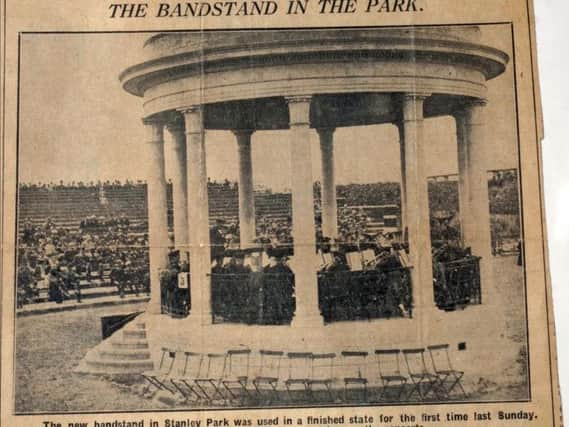Celebrating 90th anniversary of Blackpool's Stanley Park Bandstand


The iconic Stanley Park Bandstand celebrates its 90th anniversary this weekend.It has been the focal point for live music at the resort’s much loved park throughout the decades, and to mark the occasion on Sunday, a big music festival is planned.Blackpool historian Barry Shaw reflects on the history of the bandstand:“In every park large or small it is an axiom that there should be adequate provision for the enjoyment of music in the open air.Stanley Park is no exception and the great advantage of a considerable area of open water is an added bonus.The open air band auditorium was therefore placed in a commanding position to the south west corner of the lake and designed to seat up to 3,000 people.So that everyone in the audience would not only be able to see the band, but would also have delightful views of the lake towards the boat house and golf course.The bandstand is similar in design to the beautiful temple of Aphrodite situated in the gardens of Versailles near Paris.Measuring 25 feet in diameter and spacious enough for a band of 32 performers, it is classical in design and constructed of artificial stone.The domed roof with its finial is supported by columns of a Corinthian design.The plan for the borough surveyor was prepared by Mr E Prentice Mawson of the firm T H Mawson and Sons who designed the park.Contractors for the erection of the bandstand were H H Vickers and Son, Whitegate Drive, Blackpool.The bandstand was used for the first time on Sunday June 30, 1929 when the Culcheth (Manchester) Military Band provided the entertainment.In those early halcyon days silver and brass bands ruled supreme.It is interesting to note that the original site proposed for the bandstand was to have been on the natural promontory that juts into the lake to the east of the present bandstand.